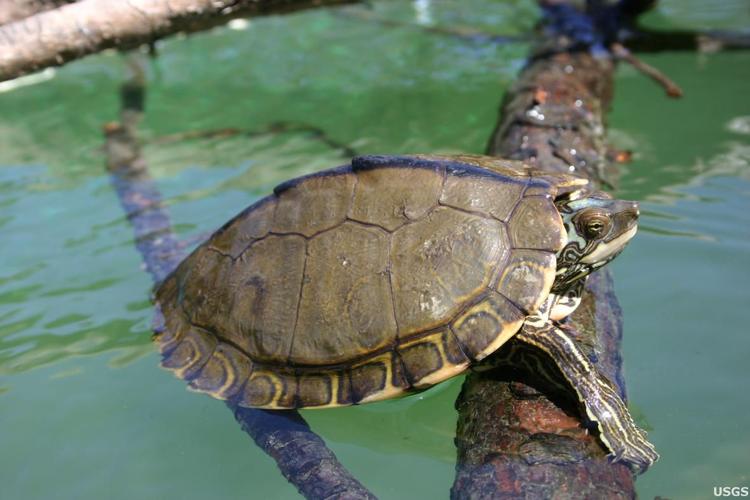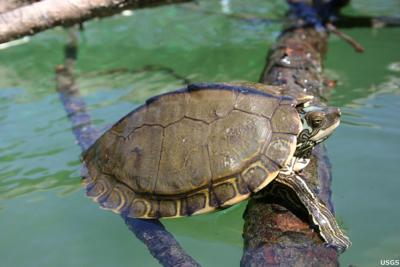The U.S. Fish and Wildlife Service will add new protections for a rare turtle whose ridged shell looks like a topographic map, with the goal of keeping it from going extinct.
The federal agency has officially recognized the Pearl River map turtle, which lives nowhere in the world except along the Pearl River in Louisiana and Mississippi, as threatened under the Endangered Species Act. That means any federal project, including an Army Corps of Engineers flood control plan to dam the Pearl River, will need to prove it won't harm the turtle.
And federal charges can now be brought against turtle poachers.
“The science that the Service has gathered on the Pearl River map turtle indicates it could become endangered in the near future,” said Fish and Wildlife biologist Luke Pearson in a statement the agency sent out Tuesday. “These native freshwater map turtles are at risk and need our help.”
There are just 21,000 Pearl River map turtles left in the wild, according to the agency.
Plus, the turtles are good for the Pearl River: The female map turtle eats invasive Asian clams, which can outcompete native mollusks and gunk up drain pipes. The adult female map turtle is more than twice the length of the male, at around 11 to 13 inches. The male, at only about 6 inches in length, is too small to eat the clams.
The federal agency noted that the turtle is under threat because of human activity. They’re nabbed from the river and sold as pets. Future sea level rise could threaten the turtle’s freshwater habitat in the Pearl, as saltwater intrudes farther and farther upstream. And development and dredging have already limited the animal’s habitat.
The agency resolved to protect the turtle before its population decline “becomes irreversible.”
Still, the Fish and Wildlife Service stopped short of designating “critical habitat” for the turtle, which would protect the areas where the turtle lives, but said it planned to do so in the next year.
The turtle’s new protections could also gum up the Corps' controversial flood control plan to dam the Pearl River to create a large lake near Jackson, Mississippi, that environmentalists and lawmakers in south Louisiana worry could devastate the lower Pearl River, leading to erosion and loss of habitat for species like the map turtle.
“[The Corps] will have to consult with the Fish and Wildlife Service to make sure that what it’s doing won’t make the Pearl River map turtle go extinct,” said Lindsay Reeves, a senior attorney at the Center for Biological Diversity, a nonprofit environmental advocacy group that pushed for the turtle to be protected.
Reeves worries that replacing river habitat with a lake could prove harmful for the turtles.
“We know the Pearl River map turtle doesn’t live in lakes,” she said. The Corps’ proposals that involve turning a part of the Pearl into a lake “wipe out that riparian environment that the map turtle needs to live,” she added.

The Pascagoula map turtle lives only in the Pascagoula River system in Mississippi. It and the similar Pearl River map turtle are under consideration for endangered species protection.
The Fish and Wildlife Service will also protect four other species of turtle — the Alabama, Barbour’s, Escambia and Pascagoula map turtles — that are nearly indistinguishable from the Pearl River map turtle. Those species are generally found in other river systems in the Gulf South, primarily in Alabama and Florida.
That makes things simpler for federal and state law enforcement agents, who now don’t have to worry about becoming experts in turtle species identification. If they catch someone selling any species of map turtle, they can simply press charges.




